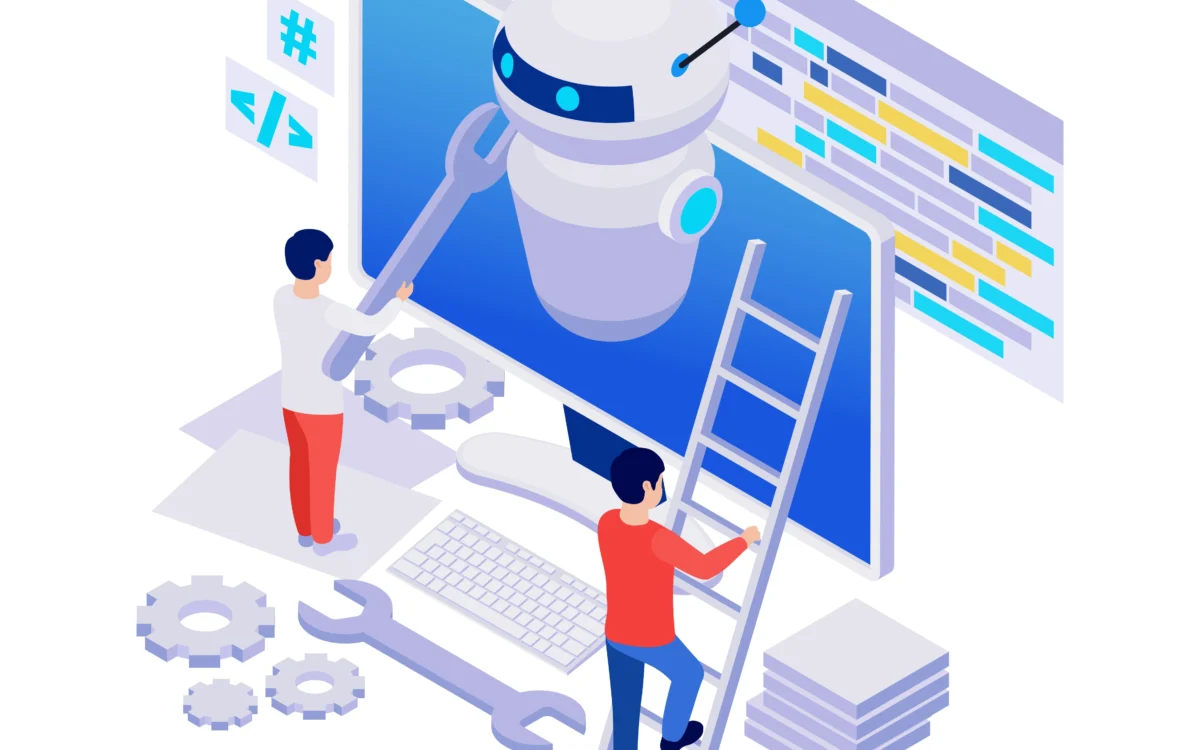
Introduction
Enterprise Resource Planning (ERP) systems are the backbone of modern organizations, enabling seamless management of business processes across finance, human resources, supply chain, production, and customer relations. They integrate disparate functions into a unified platform, allowing decision-makers to access real-time data, streamline operations, and drive organizational efficiency. For global businesses, ERP is no longer just software; it’s a strategic asset that directly impacts productivity, cost management, and competitive advantage.
Despite the critical role ERP systems play, they are not immune to operational challenges. Downtime, system glitches, and delayed processes are common issues that can disrupt business workflows, causing financial losses, missed opportunities, and reduced customer satisfaction. Traditional maintenance strategies, such as reactive or periodic preventive maintenance, often fail to address these challenges proactively. This is where ERP Maintenance Services powered by Artificial Intelligence (AI) come into the picture, offering a smarter approach to keeping ERP systems efficient and reliable.
AI-driven predictive maintenance leverages historical ERP data, system logs, and performance metrics to forecast potential failures before they happen. Instead of waiting for a system breakdown or performing maintenance on a fixed schedule, predictive maintenance allows organizations to intervene precisely when needed. This proactive approach reduces unplanned downtime, optimizes resource allocation, and enhances overall system performance.
Understanding ERP Systems
Enterprise Resource Planning (ERP) systems are comprehensive software platforms that help organizations integrate and manage all core business processes in a single environment. From finance and accounting to human resources, supply chain management, production planning, and customer relationship management, ERP systems centralize data and automate workflows to ensure seamless operations across departments.
The true power of ERP lies in its ability to provide real-time visibility into every aspect of an organization. For instance, finance teams can instantly access transactional data, supply chain managers can track inventory levels, and HR departments can monitor employee performance—all within the same system. This centralization not only improves operational efficiency but also empowers decision-makers with accurate insights, helping them make strategic choices faster and more effectively.
However, despite their advantages, ERP systems face several challenges that can affect performance and business continuity. These challenges include:
- System Downtime: Even a few hours of ERP system unavailability can halt critical operations, resulting in financial losses and operational delays.
- Complex Integrations: Integrating ERP with legacy systems or third-party applications can create technical issues and increase the risk of system errors.
- High Maintenance Costs: Traditional maintenance approaches often involve reactive troubleshooting or fixed-schedule preventive maintenance, which can be costly and inefficient.
- Data Inconsistencies: Poor data quality or unstructured information can reduce the effectiveness of ERP modules and reporting.
In essence, ERP systems are indispensable for modern enterprises, but their effectiveness depends heavily on continuous maintenance, performance monitoring, and timely interventions. Leveraging professional services and advanced technologies, such as AI-powered predictive maintenance, can significantly enhance system reliability, reduce downtime, and maximize the value derived from ERP investments.
What is Predictive Maintenance?
Predictive maintenance is a proactive approach to maintaining ERP systems and other enterprise software, aimed at identifying potential issues before they lead to system failures. Unlike traditional maintenance strategies, such as reactive maintenance, which responds only after a problem occurs, or preventive maintenance, which relies on fixed schedules, predictive maintenance uses real-time data and analytics to forecast potential disruptions.
The foundation of predictive maintenance lies in data analysis. By continuously monitoring system logs, transaction histories, and performance metrics, AI algorithms can detect patterns, anomalies, and early warning signs that indicate potential system degradation. This allows organizations to schedule maintenance activities precisely when they are needed, rather than adhering to arbitrary schedules or waiting for breakdowns.
Key benefits of predictive maintenance include:
- Reduced Downtime: By anticipating failures, organizations can avoid unexpected system interruptions that affect business operations.
- Cost Efficiency: Targeted maintenance reduces unnecessary expenditures on manual checks or blanket preventive interventions.
- Improved System Reliability: ERP modules function more consistently, supporting smoother workflows and better decision-making.
- Enhanced Decision-Making: Accurate predictions allow IT teams and management to plan resources and maintenance activities more effectively.
In today’s fast-paced business environment, predictive maintenance is no longer optional—it is essential. By combining traditional maintenance practices with advanced AI analytics, organizations can transform their ERP maintenance from a reactive, time-consuming process into a proactive, intelligent strategy that ensures continuous system reliability.
Role of AI in Predictive Maintenance
Artificial Intelligence (AI) has transformed the way businesses approach ERP system maintenance. Traditional methods, such as scheduled preventive checks or reactive troubleshooting, often fail to address emerging issues in real time. By integrating AI into predictive maintenance, organizations can shift from a reactive approach to a proactive, data-driven strategy that ensures ERP systems remain efficient and reliable.
How AI Enhances Predictive Maintenance
- Real-Time Data Analysis:
AI algorithms continuously monitor ERP system activity, analyzing logs, transaction data, and user interactions. This allows the system to detect anomalies or performance deviations before they escalate into serious issues. - Predictive Modeling:
Machine learning models can forecast potential ERP failures by studying historical system behavior. For example, patterns in module performance or recurring error logs can indicate when a specific ERP component is likely to fail. - Anomaly Detection:
AI can spot irregularities that human operators might miss. From sudden spikes in database errors to unusual processing delays, anomaly detection enables IT teams to act promptly and prevent downtime. - Automated Alerts and Recommendations:
AI-powered predictive maintenance tools can automatically generate alerts and maintenance recommendations. This ensures that IT teams are informed immediately and can schedule corrective actions efficiently. - Continuous Learning:
Machine learning models improve over time, adapting to new patterns and emerging system behaviors. This continuous learning ensures that predictive maintenance becomes more accurate and effective as the ERP system evolves.
Global Implementation Examples
Organizations around the world are embracing AI-driven predictive maintenance to safeguard their ERP investments:
- An ERP Company in Dubai may implement AI monitoring tools to track real-time system performance, predict failures in critical modules, and schedule maintenance without disrupting business operations.
- Businesses availing ERP Services in Kuwait can leverage AI insights to prevent delays in supply chain or financial operations caused by ERP downtime.
- Companies adopting ERP in Qatar benefit from AI-powered dashboards that highlight potential risks, optimize resources, and reduce maintenance costs.
- Similarly, enterprises exploring ERP Companies in South Africa can integrate AI-driven predictive maintenance to enhance system reliability and improve overall ROI.
The Strategic Advantage
By leveraging AI in predictive maintenance, businesses gain a strategic advantage. Not only do they reduce unplanned downtime, but they also enhance system performance, optimize IT resources, and improve user satisfaction. AI ensures that ERP systems operate at peak efficiency, allowing organizations to focus on growth and innovation rather than constant troubleshooting.
Benefits of AI-Driven Predictive Maintenance in ERP Systems
AI-driven predictive maintenance offers significant advantages for ERP systems, transforming how businesses manage their enterprise software. One of the most important benefits is reduced unplanned downtime. By predicting potential failures in ERP modules, organizations can schedule maintenance proactively, preventing disruptions in critical operations like finance, supply chain, and HR management.
Another key benefit is cost efficiency. Traditional maintenance often leads to unnecessary checks or emergency interventions. AI allows companies to optimize resources, performing maintenance only when required, thus saving both time and money. Businesses utilizing ERP Maintenance Services can leverage these insights to maximize operational efficiency and reduce maintenance overheads.
Enhanced system reliability is another major advantage. ERP systems remain consistently functional, providing accurate data and seamless workflows. This reliability improves decision-making and ensures smoother business processes. Companies seeking an ERP Company can particularly benefit from AI predictive maintenance, as it helps maintain system stability across complex, multi-module ERP environments.
In short, AI-driven predictive maintenance empowers businesses to move from reactive ERP management to a proactive, intelligent approach, offering efficiency, cost savings, and enhanced reliability across all operations.
Implementation Process
Implementing AI-powered predictive maintenance for ERP systems requires a structured and strategic approach to ensure maximum efficiency and ROI. The first step is assessing ERP system data readiness. Accurate, complete, and structured data is essential for AI algorithms to detect patterns, predict failures, and generate actionable insights.
Next, organizations must select the right AI predictive maintenance tools. Platforms like IBM Maximo, SAP Predictive Maintenance, and Microsoft Azure AI for ERP offer features such as anomaly detection, predictive modeling, and real-time monitoring. Choosing tools that integrate seamlessly with existing ERP modules is crucial.
The third step is integration with ERP modules. Finance, HR, supply chain, and production modules should be connected to AI monitoring tools, ensuring end-to-end visibility of system health. Once integrated, businesses should set KPIs and monitoring dashboards to track performance, system anomalies, and potential maintenance needs effectively.
Continuous improvement is the final step. AI models must be regularly trained with updated data to improve accuracy and adapt to evolving system patterns. This ensures predictive maintenance becomes more precise over time, reducing unplanned downtime and enhancing system reliability.
Challenges in Adopting AI for Predictive Maintenance
While AI-driven predictive maintenance offers significant benefits for ERP systems, organizations may face several challenges during adoption. One primary challenge is data quality and availability. AI algorithms require accurate, consistent, and structured ERP data to predict failures effectively. Incomplete or erroneous data can lead to inaccurate predictions, reducing the reliability of maintenance strategies.
Another challenge is integration complexity. Many businesses operate on legacy ERP systems, which may not be easily compatible with modern AI tools. Integrating predictive maintenance solutions requires careful planning to avoid disruptions and ensure seamless data flow across modules.
Employee adaptation and change management is also a critical factor. Staff members need to understand and trust AI recommendations. Without proper training, there may be resistance to relying on AI-driven alerts or automated maintenance decisions.
Cybersecurity and data privacy concerns also emerge when integrating AI with ERP systems. Sensitive organizational data must be protected while AI models analyze system performance, requiring robust security protocols and compliance with data regulations.
Addressing these challenges proactively enables organizations to implement AI-powered predictive maintenance successfully, ensuring reliable ERP operations, reduced downtime, and enhanced operational efficiency.
AI-Powered Predictive Maintenance Tools and Technologies
AI-powered tools and technologies are the backbone of predictive maintenance for ERP systems, enabling organizations to monitor performance, detect anomalies, and prevent downtime proactively. Leading platforms like IBM Maximo, SAP Predictive Maintenance, and Microsoft Azure AI for ERP provide advanced functionalities to ensure system reliability and efficiency.
IBM Maximo offers predictive analytics and asset management capabilities, allowing businesses to identify potential ERP failures before they impact operations. SAP Predictive Maintenance integrates seamlessly with SAP ERP modules, using machine learning algorithms to forecast system issues and recommend timely interventions. Meanwhile, Microsoft Azure AI for ERP leverages cloud-based analytics and real-time monitoring to ensure continuous system health and performance.
These tools typically include features such as:
- Anomaly Detection: Spot irregularities in ERP operations that may indicate system issues.
- Predictive Modeling: Forecast potential failures based on historical ERP data.
- Real-Time Monitoring: Track ERP modules continuously to prevent disruptions.
- Automated Alerts and Recommendations: Notify IT teams of necessary maintenance actions.
By adopting AI-powered predictive maintenance tools, businesses can ensure their ERP systems remain robust, cost-efficient, and future-ready.
Future Trends in AI Predictive Maintenance for ERP
The future of AI-powered predictive maintenance for ERP systems is evolving rapidly, driven by advancements in artificial intelligence, machine learning, and IoT technologies. Organizations are increasingly adopting smart solutions to ensure continuous ERP system reliability and operational efficiency.
One major trend is IoT integration, where connected devices and sensors collect real-time data from ERP system environments. This enables predictive maintenance algorithms to detect anomalies immediately and prevent potential disruptions before they impact business operations.
Cloud-based ERP maintenance platforms are also gaining popularity. Cloud integration allows organizations to access predictive analytics, dashboards, and AI insights from anywhere, ensuring flexibility and scalability. This trend is particularly beneficial for global businesses seeking ERP Services, as they can manage ERP health across multiple locations efficiently.
Another emerging trend is the use of deep learning and advanced analytics. These technologies analyze complex patterns in large ERP datasets, improving the accuracy of failure predictions and maintenance scheduling.
In addition, predictive maintenance solutions are expected to become more user-friendly and automated, with AI providing actionable recommendations directly to IT teams and decision-makers. By staying ahead of these trends, businesses can ensure their ERP systems remain efficient, resilient, and future-ready in a highly competitive digital landscape.
Best Practices & Recommendations
To maximize the benefits of AI-driven predictive maintenance for ERP systems, organizations must follow best practices that ensure efficiency, reliability, and cost-effectiveness.
- Regular Data Audits:
Accurate and structured ERP data is crucial for predictive maintenance. Conducting periodic data audits ensures AI algorithms receive reliable inputs, enhancing the accuracy of failure predictions and maintenance recommendations. - Select Compatible AI Tools:
Choose predictive maintenance platforms that integrate seamlessly with your existing ERP modules. Tools like IBM Maximo, SAP Predictive Maintenance, or Microsoft Azure AI for ERP provide robust analytics while minimizing integration challenges. - Employee Training:
Employees must understand AI insights and alerts to take timely actions. Training IT teams and ERP users improves adoption, reduces resistance, and ensures predictive maintenance strategies are applied effectively. - Continuous Monitoring & Improvement:
AI models should be updated regularly with new data to adapt to system changes. Continuous monitoring helps refine predictions and optimize ERP system performance over time.
By following these best practices, organizations can transition from reactive maintenance to a proactive, intelligent ERP maintenance strategy. This approach reduces downtime, optimizes resources, and ensures ERP systems operate efficiently, supporting overall business growth and competitiveness.
Conclusion
AI-powered predictive maintenance is rapidly transforming the way organizations manage ERP systems. By leveraging real-time data, machine learning algorithms, and advanced analytics, businesses can anticipate system failures, reduce unplanned downtime, and optimize operational efficiency.
Implementing AI in ERP maintenance requires careful planning, including data readiness assessments, selection of compatible AI tools, employee training, and continuous monitoring. Businesses that follow these best practices can transition from reactive maintenance to a proactive, intelligent approach that keeps ERP systems operating at peak efficiency.
In today’s competitive digital landscape, AI-driven predictive maintenance is no longer a luxury—it is a necessity. Organizations that invest in these strategies secure their ERP systems against unexpected failures, improve workflow continuity, and unlock the full potential of their enterprise software. By partnering with expert providers for ERP Maintenance Services, businesses can ensure long-term system stability, cost savings, and operational excellence.
FAQ
Q: What is predictive maintenance in ERP systems?
A: Predictive maintenance uses AI and data analytics to anticipate ERP system failures before they occur, reducing downtime and improving efficiency.
Q: How does AI reduce ERP downtime?
A: AI monitors system logs and performance metrics in real time, detects anomalies, and predicts potential failures, allowing proactive maintenance.
Q: Which ERP systems benefit most from predictive maintenance?
A: ERP systems with multiple modules such as finance, HR, supply chain, and production gain the most from AI-driven predictive maintenance.
Q: What are the advantages of using an ERP Company in Dubai or ERP Services in Kuwait?
A: These providers offer expert AI integration, predictive maintenance setup, and system monitoring to enhance ERP performance and reliability.
Q: How can businesses in Qatar or South Africa implement AI-driven ERP maintenance?
A: By partnering with expert ERP service providers, using AI tools, monitoring ERP health, and following best practices for predictive maintenance.





